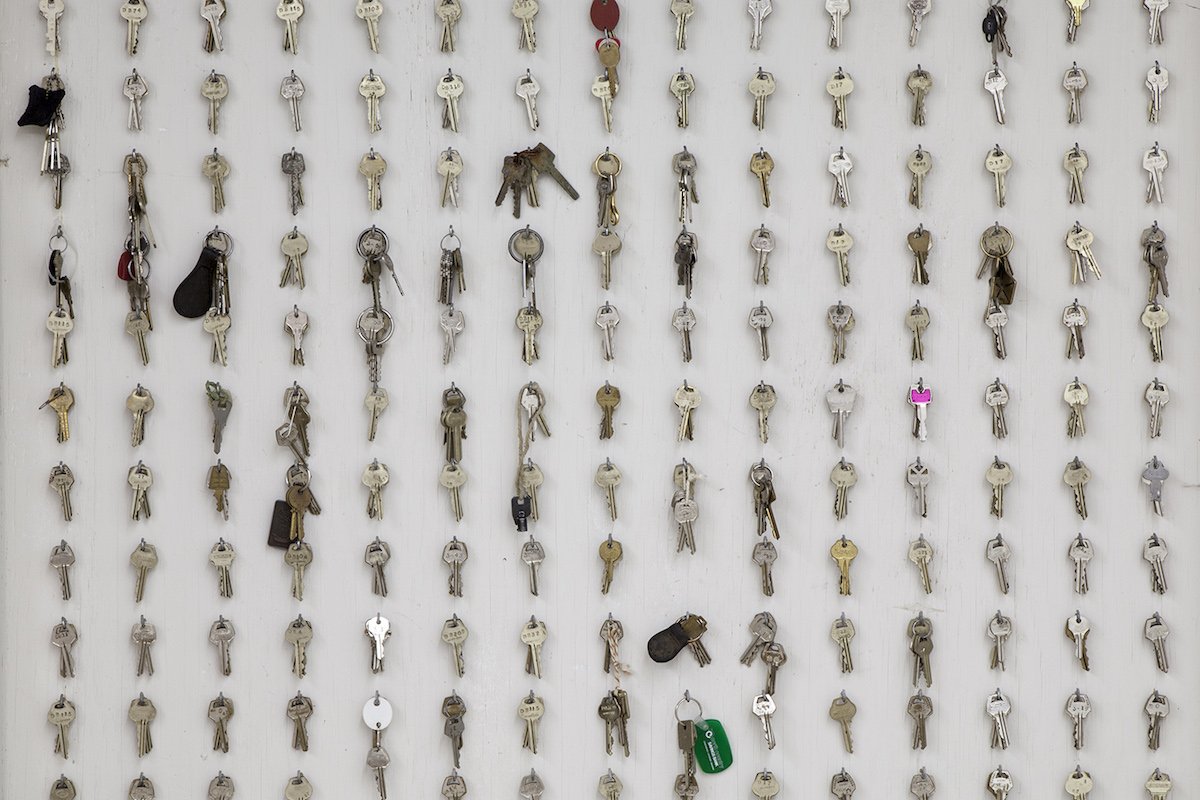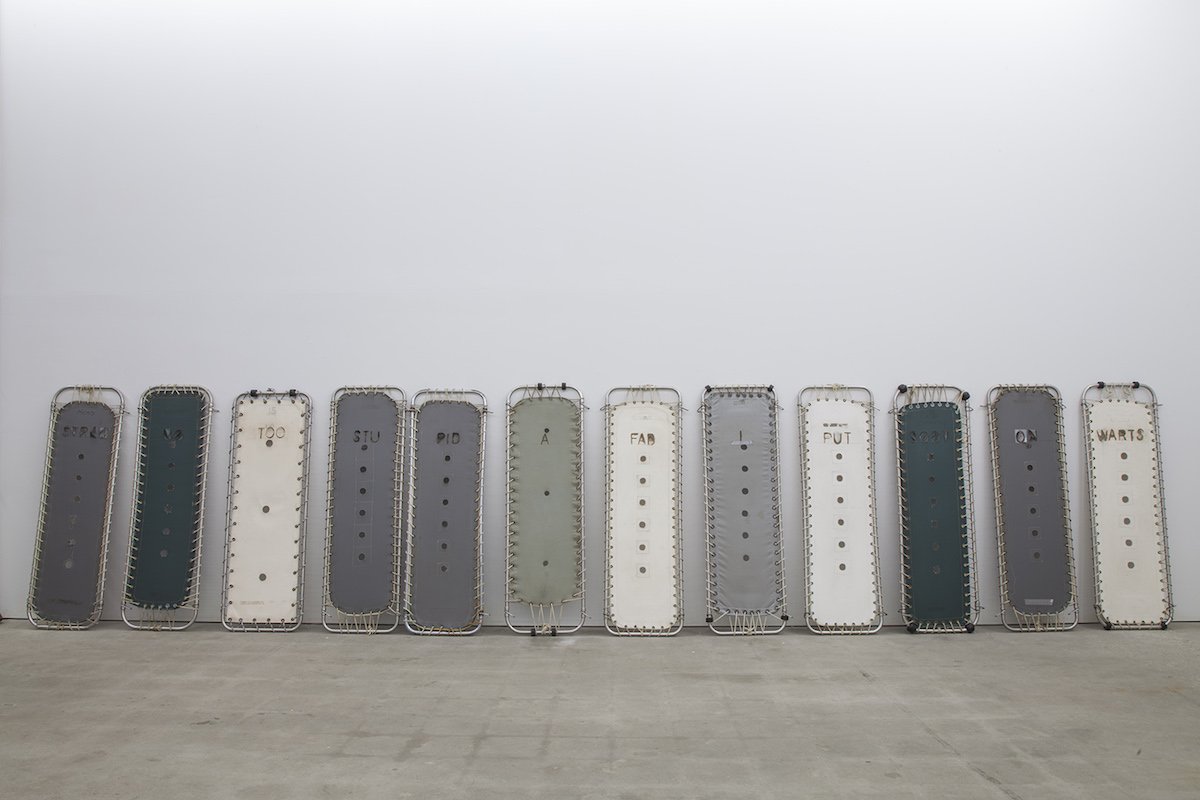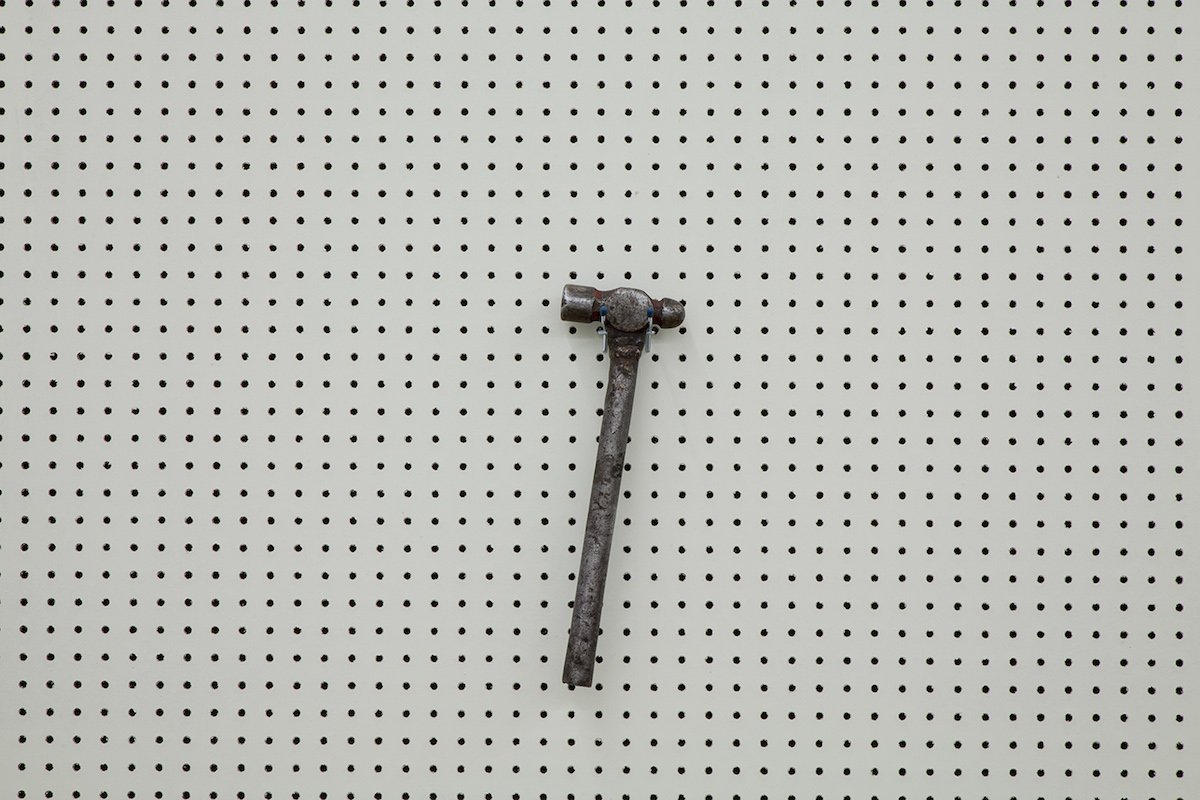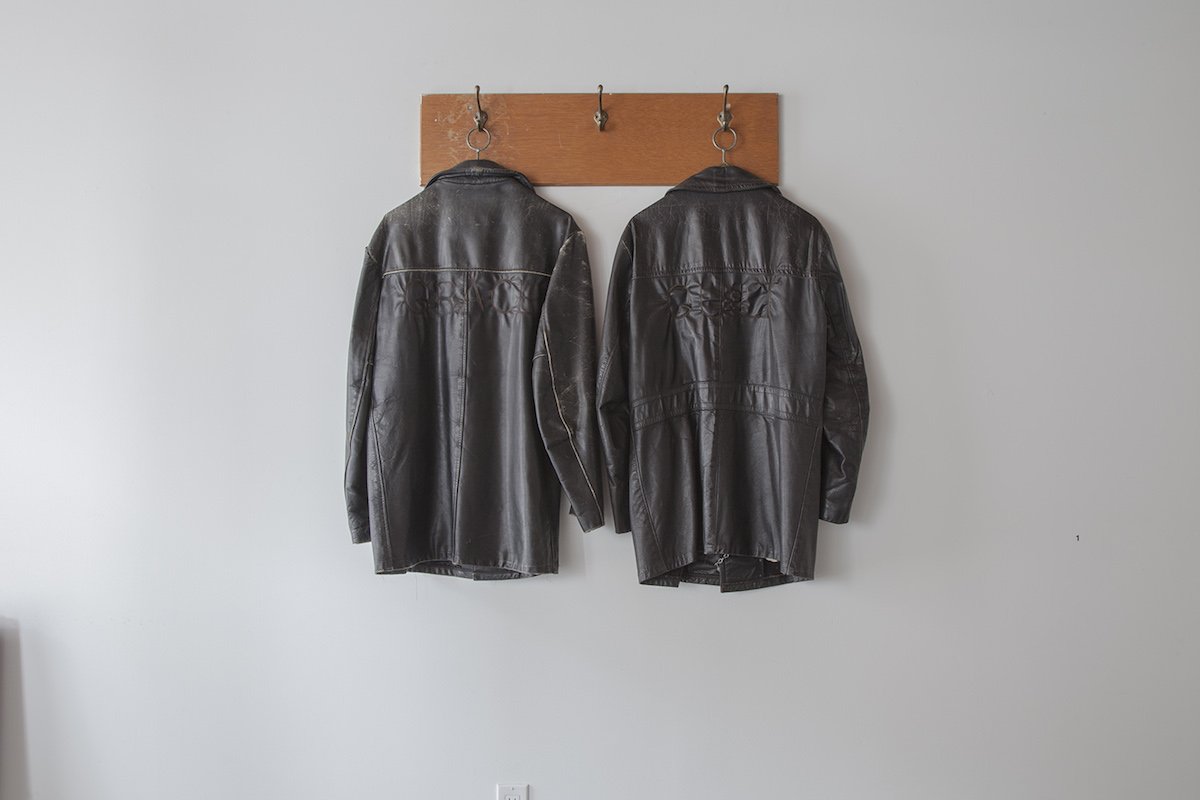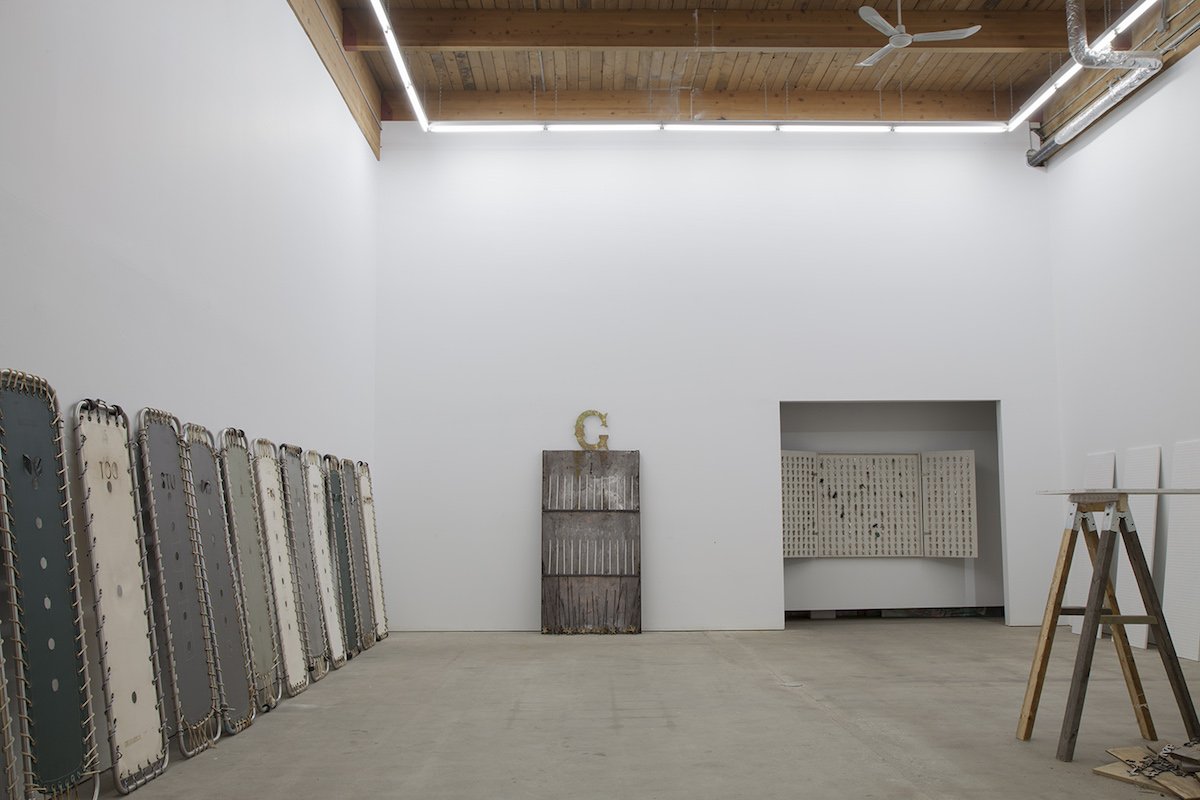
Blair Brennan
The Right Side of Magic
August 30 – October 11, 2014A survey of work from 1986 – 2014 including An Unlearned Human Language, a new collaborative performance/installation with Brian Webb and Allyson MacIvor
The Right Side of Magic is a self-curated survey exhibition featuring work by Brennan from 1986 through 2014. The exhibition includes numerous works on paper, installation and object based work. Much of this work has never been exhibited in Edmonton. Some works have been featured in exhibitions across Canada, while other works are of a private, ritualistic nature and have never before been seen by the public. The exhibition will also include An Unlearned Human Language, a new collaboration with Brian Webb. The phrase “an unlearned human language” has been used to describe speaking in tongues. With this title, Brennan reveals his continued interest in ritual and ecstatic religious experience and the value of exploring ritual, obsession and the often hazy separation of magic, religion and science through performance/installation art. New themes and aesthetic concerns also emerge in this work – the dignity of labour, misplaced Christian work ethic, hyper-masculinity and a further exploration of the connection between language, magic and ritual.
Since the late 1980s Brennan has been working on text based works – the text often applied to objects, books, works on paper, gallery walls etc. with hot steel branding irons (not unlike the kind still used on livestock). For Brennan, it is a combination of history, the mythic west and a hybrid mark that readily confuses legal protection with talismanic marks that provide magical protection. Brennan sites numerous literary influences in this work (more than visual artists). Chief among these influences is the writing of William S. Burroughs, his work with writer and artist Brion Gysin and their use of Gysin’s “cut-up” method (a sort of literary collage).
In 1996 Brennan accompanied Edmonton Art Gallery (now the Art Gallery of Alberta) curator Bruce Grenville (currently Senior Curator at the Vancouver Art Gallery) to Lawrence, Kansas to meet with Burroughs while Grenville worked on the EAG’s Brion Gysin exhibition. Brennan asserts that his interest in Burroughs is linked to magical use of language and Burroughs’ effort to disrupt the “restrictive logic” and “controlling structure” of language. It is also apparent that Brennan links Burroughs’ writing to the mythic west— a west that is, as Brennan puts it, “big enough for Louis L’Amour and William S. Burroughs.”
In a 2008 article, written for Visible Language, a journal produced by the Rhode Island School of Design (RISD), Brennan provides a sort of extended artist statement and outlines his thoughts on branding, language and magic.
Performances:
(An Unlearned Human Language)
Thursday, September 18, 2014 8:00pm
Friday, September 19, 2014 8:00pm
Saturday, September 20, 2014 8:00pm
Reception to follow Saturday’s Performance
Art as fetish or talisman and, in general, the magical function of objects – these are concepts that frequently come up in Brennan’s art. Brennan’s work has been informed and enriched by the research of his wife, anthropologist and anthropology instructor, Simone Gareau (who regularly teaches, among other things, anthropology of religion). Brennan claims that Sir James George Frazer’s The Golden Bough and Frazer’s concept of sympathetic magic therein are fundamental to his art work. Frazer suggests that things that resemble each other (visually, physically, etc.) are connected and, additionally, that things once connected, forever remain connected.
It is unclear whether Brennan consistently believes in the magical efficacy of his work (he insists that the title of the 1995 work To Heal and Protect Twelve People is a description of the magical function of this work, not merely a title) or if he employed and adapted Frazer’s ideas as a strategy to make work unaffiliated with the Edmonton strain of modernism that he was schooled in.
A 1988 Globe and Mail art review noted the “rude punk brutality” of Brennan’s work. It could be argued that this has remained unchanged for the past 26 years. With regard to visual art in his home city of Edmonton, Brennan has been called an “enfant terrible” and, as Mary-Beth Laviolette points out, a “dissenter”. In writing about his collaborative work with Brian Webb, Edmonton Journal arts reporter Pamela Anthony gets closer to the poetic nature of Brennan’s work, comparing him to Joseph Campbell and, more recently, Regina-based artist and critical art writer David Garneau has called Brennan an “Edmonton-based neo-beat poet disguised as a blue-collar industrial artist who brands walls, books, leather and paper with the world’s subtexts.”
Brennan’s drawings and three-dimensional works often incorporate a sort of experimental writing. Recently, however, Brennan has been committed to the development of a straight forward – less experimental – critical art writing practice. Brennan has contributed reviews and articles to a number of national arts and cultural publications. In December 2012, he completed an appointment as Writer in Residence for Latitude 53 Society of Artists in Edmonton. He has contributed guest articles to Prairie Seen website and his catalogue essay on Edmonton artist Catherine Burgess accompanied her recent Art Gallery of Alberta exhibition.
Blair Brennan was born in Edmonton in 1959. He graduated from the University of Alberta with a Bachelor of Fine Arts in 1981. His most consistent studio training was in abstract formalist welded steel sculpture. However, it became a discipline that he was eager to distance himself from. In Mary-Beth Laviolette’s 2006 book An Alberta Art Chronicle: Adventures in Recent Contemporary Art, she identifies Edmonton as a centre for modernist abstraction and discusses Brennan’s departure from this Edmonton-based movement in a chapter entitled Abstract Sculpture and a Dissenter. Brennan is, of course, that “dissenter”.
Brennan cites Edmonton artists Catherine Burgess and Alan Reynolds as important early influences in his art and studio practice. However, his work began to depart from that of his abstract counterparts almost immediately after he left the University. By 1987, Brennan was no longer concerned with abstract sculpture or monolithic aesthetic objects of any sort. Brennan’s new works were ragged, room-filling installations that incorporated found and fabricated objects and hinted at an obsessive spiritual, magic or religious function. Brennan’s work revealed his awareness of conceptual art, pop art, minimalism, Fluxus and Arte Povera. Brennan was influenced by British sculptors who gained recognition in the 80s like Tony Cragg, Anish Kapoor, Richard Deacon, Antony Gormley, Richard Long, David Mach, Bill Woodrow and, closer to home, the work of Calgary artists Walter May, Gordon Ferguson and Blake Senini. This was combined with an emerging (in Edmonton, at the time) post-modern sensibility and a few choice influences (Brennan mentions the “Beuys, Warhol, Duchamp revolution that never quite made it to Edmonton”).
The Right Side of Magic, a related publication and the performance of An Unlearned Human Language, are supported by the Alberta Foundation for the Arts and the University Of Alberta Department Of Music.
Brennan started a collaborative relationship with Edmonton based, nationally acclaimed dancer and choreographer Brian Webb in 1988. Webb had, for some time, been committed to collaborative relationships with visual artists and musicians based on the premise of democratic exchange of ideas. Since 1979, the Brian Webb Dance Company (BWDC) has presented contemporary dance from across Canada and abroad. The BWDC has contributed greatly to various forms of co-creation and has been the platform for much of Webb’s solo exploration.
Brennan and Webb created collaborative installation dance/performance pieces that referenced religious rites and rituals. Brennan and Webb collaborations could often be seen as “the ritual” in an evening performance and “the artefact” of that ritual during a day-time exhibition. In general, Brennan provided imagery and objects while Webb worked out the myriad details of choreography and movement. However, the nature of their collaboration allowed a free flow of ideas between both “artist” and “performer” into each other’s respective disciplines.
It was a highly productive artistic relationship and an enduring friendship. Much of Webb’s and Brennan’s work revealed their belief that the origins of dance are found in ceremonial and religious rites while the origin of sculpture may similarly be found in fetish objects (used in those rites). Brennan and Webb collaborative works were presented in Edmonton, Calgary, Ottawa, Toronto and Montreal form 1988 to 1995.
In 2012, Isabelle Van Grimde, Directrice artistique (Artistic Director) of the Montreal-based contemporary dance company Van Grimde Corps Secrets, invited Alberta artists Sean Caulfield, Roydon Mills and Blair Brennan to collaborate on a piece to be included in the exhibition The Body in Question(s) / Le corps en question(s). The exhibition was conceived as an active installation for live performance. Isabelle Van Grimde curated the exhibition and choreographed the movement of five contemporary Canadian dancers (Brian Webb and four others) in the gallery space interacting directly with (handling, moving, touching, etc.) the works provided by visual artists.
The Body in Question(s) / Le corps en question(s) was a unique collaboration between dancers, visual artists, multimedia artists, thinkers and soundscape and set designers. The premier exhibition and performance took place at the Galerie de L’UQAM, Université du Québec à Montréal in 2012. Further exhibitions/performances are planned for the National Arts Centre in Ottawa, as part of the Canada Dance Festival (Summer 2015) and Edmonton (Summer 2015). This project rekindled Brennan’s desire to work on performance and installation art projects in collaboration with Brian Webb.
